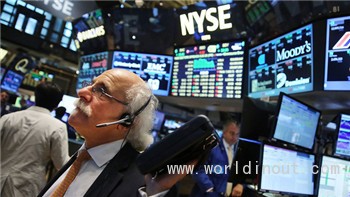
Most investors have been able to muster only two cheers for the year that has just ended.
In 2015, the performance of the main asset classes just about managed to maintain the broad pattern that has been seen since the equity bull market started in March 2009 but there are now definite signs of market fatigue. And although some major trends were obvious in retrospect — weak oil prices, falling euro, rising dollar, tumbling emerging currencies – they recorded sharp reversals that many macro investors failed to navigate in real time.
Global equities returned about 2 per cent in local currency terms [1], less than in recent years. In dollar terms, returns were slightly negative and market peaks in May 2015 have not yet been re-attained. A top may be forming, but as yet there is little sign that a major bear market trend has started.
Government bonds returned about 1 per cent, defying widespread predictions of a trend reversal, and yields were almost exactly flat during the year. Commodity prices plummeted by 33 per cent, continuing the crash that started in mid 2014, and they eventually took credit markets down with them. US high yield securities, for example, returned -9 per cent in 2015. Emerging markets (with the perplexing exception of Chinese equities, the best performing of the major markets) were also hit by the commodity melt-down and generally continued to under-perform developed market assets, in equities, credit and currencies.
Overall, then, the magic mix of moderate gross domestic product growth combined with extremely easy monetary conditions has continued to work in the developed markets. However, overall global asset market returns (bonds plus equities in local currencies, equally weighted) were only about 1.5 per cent, suggesting that some of the magic is wearing thin.
Looking ahead, it seems likely that 2016 will, at best, see similarly low asset returns. That, anyway, is overwhelmingly the consensus central view among mainstream forecasters. But as the bull market matures, it seems inevitable that one year soon we will experience a major setback to asset prices. Will 2016 be that year?
The macro themes for 2016 identified by some of the major forecasting houses are summarised here. With a few outliers (notably, Citigroup, which expects a global recession in 2016), the themes are widely shared and increasingly familiar. This is not a new phenomenon: many themes work over time, even though they are well telegraphed in advance.
Global GDP growth is expected to rise a little from the dip seen in mid 2015, but investors have now recognised the large decline in underlying productivity growth since the financial crash, and no longer expect any significant acceleration in the recovery.
The level of global output will remain just below trend in both the developed and emerging worlds, so there should be no immediate rise in underlying inflation. However, because commodity prices are expected to stabilise, forecasters confidently expect headline inflation rates to rise, taking bond yields up with them.
On the central banks, two main themes are identified by almost everyone. Global monetary conditions are expected to remain highly accommodative in aggregate. But there is expected to be further divergence between central banks at the “leading edge” (the Federal Reserve and possibly the Bank of England) and the rest. The resulting rise in the dollar is an old and successful theme, but one that is still much loved.
Another widely anticipated theme is that growth in the emerging economies will continue to struggle, despite the fact that almost no one now expects a hard landing in China. Many point to the likelihood of credit deleveraging in the emerging world, but very few expect this to be powerful enough to cause a severe global downturn.
These themes sketch an economic backdrop that would be moderately favourable to asset returns, a little like 2015 has been. But there are downside risks that could produce a much worse year. Three risks seem to be particularly worrying:
1. A more hostile Fed
Investors seem supremely unconcerned about this risk, believing that secular stagnation (still a widely held theme) will stop the Fed in its tracks. But is the balance of risk correctly priced in this respect? The Federal Open Market Committee repeatedly informs us that it expects to announce four 0.25 per cent rate rises in 2016, while the market expects only two. If the Fed announces its next move in March (having skipped the January meeting), the market may suddenly wake up and pay attention to the likely speed of tightening.
The basic issue here is that the FOMC is far more sceptical than the markets about the secular stagnation hypothesis. The committee is more confident that economic headwinds will slacken in the next year or two, allowing them to shift interest rates upwards towards the rising equilibrium interest rate. If, as they expect, core inflation rises in coming months, they will be emboldened in this view. That would mean a bumpier ride for both bonds and equities.
2. A Chinese devaluation
This was the risk that really spooked markets in August 2015, especially when combined with the onset of Fed tightening. The fear that China would decide to export its deflation by devaluing the renminbi at precisely the same moment that US monetary policy was changing direction was enough to cause severe tremors. As the new year starts, investors have become more confident that they understand China’s new exchange rate strategy. This seems to involve greater flexibility for the renminbi against the (likely) rising dollar, but broad stability for China’s effective rate against a basket of currencies. In retrospect, it seems that this policy has been followed throughout 2015.
The People’s Bank of China has now persuaded markets that it has no intention of devaluing the effective rate very far from the stable range that operated last year. But deflation remains rampant in the Chinese manufacturing sector, and over capacity is far from eradicated. A large renminbi devaluation would only be be used as an option of the last resort. But it represents a huge tail risk that would be the final nail in the coffin of the equity bull market.
3. A credit meltdown in the emerging economies
Credit growth is now slowing throughout the emerging world, and the cold turkey phase of the credit cycle could be very prolonged. JPMorgan economists have estimated that credit deleveraging could reduce GDP growth in the emerging world by 2 to 3 percentage points over the next three years, or even more if there are severe crises of financial confidence. This would be enough to slow global GDP growth by 1 to 1.5 percentage points. At the lowest end of that range, a global recession would become likely.
After 2008, macro-economists were shocked by the severity and persistence of the contractionary effects from the bursting of the credit bubble in the developed world. The relatively comfortable assumptions that are now being made to drive central forecasts for economies and markets in 2016 could easily be blown out of the water by a similar debacle in the emerging world.







